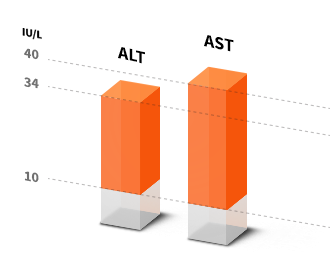What does the liver do? What is ALT and AST?
The liver is the largest glandular organ in the body. It performs a number of vital functions; it makes many of the chemicals required by the body, it breaks down and detoxifies substances in the body, and it also acts as a storage unit.
Here is a list of the liver’s critical functions:
- Produces bile
- Detoxifies blood by metabolizing alcohol and drugs
- Stores some vitamins and minerals
- Regulates the supply of glucose
- Breaks down insulin and other hormones
- Converts ammonia into urea
- Destroys old red blood cells
- Manufactures cholesterol
What are ALT and AST?
ALT (or SGPT) and AST (or SGOT) are the most sensitive and widely-used indicators of liver damage. They belong to a group of liver enzymes called the aminotransferases, or transaminases. The levels of these liver enzymes are measured in blood tests to detect liver damage.
Under normal circumstances, these enzymes are contained within liver cells. But if the liver is injured, the liver cells spill the enzymes into the blood stream, raising the enzyme levels in the blood and signaling the liver damage.
However it must be emphasized that above-normal levels of these liver enzymes does not automatically equate with liver disease. The interpretation of elevated ALT and AST levels depends upon the whole.
What are normal levels of ALT and AST?
The normal ranges of ALT and AST depend on many things, including age and gender. The normal value ranges may also vary slightly among different laboratories and different countries.
Here are the common results suggested by the US National Institutes of Health measured in international units per liter:
ALT (SGPT): 10–40 IU/L
AST (SGOT): 10–34 IU/L
- * All research and clinical data should be used as reference purposes only, results may vary.








